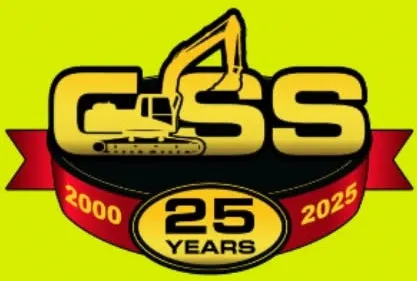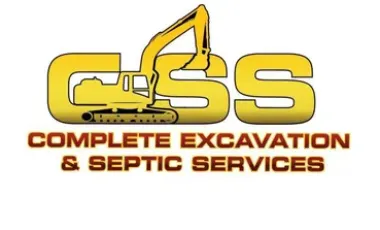
Proudly Serving: Grand Isle, Franklin & Chittenden Counties, VT and Clinton County, NY

The Best Time to Install a Drainage System near Chittenden County, Vermont
1) Why Timing Matters for a Drainage System near Chittenden County, Vermont
If you own a home here, you already know water has a mind of its own. It follows the path of least resistance. That path may be your lawn, your foundation, or the low spot by your driveway. When heavy rain, spring snowmelt, or a late fall storm hits, water collects fast. You worry about a damp basement, soft soil, and muddy ruts. You worry about mold. You wonder if next storm season will be worse.
We understand that feeling. At Complete Excavation & Septic, we meet homeowners who are tired of wet spots, puddles, and musty smells. You want a simple plan, a fair price, and long-term relief. Timing your project is a big part of that plan. When you choose the right window for a Drainage System near Chittenden County, Vermont, everything goes smoother and costs less.

2) Quick Answer: The Best Season to Install (and When to Avoid It)
Best overall window: Late summer through early fall.
Why it works: Soils are drier, access is easier, plants are mature, and weather is steady. This makes trenching and grading efficient and cleaner. Restoration is faster.
Good second choice: Late spring into early summer, once “mud season” ends.
Why it works: After soils firm up, we can set grades accurately and avoid deep ruts.
Use caution: Early spring and late fall.
Why: Saturated soils and freeze-thaw cycles can slow work, raise costs, and make cleanup harder.
Least ideal: Deep winter.
Why: Frozen ground and snow cover limit access and raise labor and equipment needs, unless we are solving an emergency.
3) How Vermont Weather Shapes Your Drainage Plan
Our seasons shape the ground. In northern Vermont, we see freeze-thaw cycles, spring snowmelt, and short dry windows. Water tables can shift fast after storms. When soils are saturated, trenches collapse and machines leave marks. When soils are dry and stable, we can cut clean trenches, set precise pipe slopes, and backfill with less mess. A well-timed Drainage System near Chittenden County, Vermont is built on this weather rhythm.
4) Spring vs. Summer vs. Fall vs. Winter: What Changes for Your Drainage System near Chittenden County, Vermont
Spring:
Pros: You catch early problems before storm season.
Cons: Mud season can delay equipment access. Wet soils slow trenching. Lawns are soft and easier to damage.
Summer:
Pros: Drier ground, longer workdays, stable weather.
Cons: Higher demand can affect scheduling. Plan ahead.
Fall:
Pros: Soil moisture is usually moderate. Perfect for finishing before winter. Restoration can happen before frost.
Cons: Shorter days and early cold snaps can narrow the window.
Winter:
Pros: Sometimes firm frozen ground helps access on large sites.
Cons: Frost depth, snow, and limited restoration make it a last resort unless it is an emergency fix.
5) Soil, Slope, and Water Table: The Local Factors That Decide Your Timeline
Not every yard is the same. In some parts of Chittenden County, you may see heavier clay that holds water. In others, sandy loam drains faster. We also look at slope, roof runoff, downspout locations, driveway pitch, and nearby ditches. High water tables or seasonal springs may limit how deep we go. The right time for your Drainage System near Chittenden County, Vermont is when the ground is dry enough to work, yet early enough to protect you from the next wet season.
6) Red Flags You Need a Drainage System Now (Don’t Wait for the Next Storm)
Water pooling near your foundation for more than 24 hours
A damp basement or musty smell after rain
Soil erosion tracks or mulch washed away
Soggy lawn patches and moss growth where grass used to thrive
Heaving or settling pavers and cracks near steps
Standing water along fence lines or property edges
If you see these signs, your timing is “as soon as conditions allow.” Waiting often leads to bigger repairs later.
7) Permits, Call-Before-You-Dig, and Access: Scheduling Smart in Chittenden County
Good planning reduces delays. We coordinate utility locates, any needed permits, and site access plans. On tight lots, we may use smaller equipment or protective mats. On wider properties, we plan equipment routes to avoid your best trees and garden beds. Timely scheduling helps us complete your Drainage System near Chittenden County, Vermont with less disruption.
8) Project Timeline: From Site Walk to Finished Drainage System near Chittenden County, Vermont
Site visit and goals: Walk the property with you. Study grades, downspouts, and low spots.
Design: Choose the right system, pipe routes, depths, and discharge points.
Utility locates: Call 811 and any local services.
Scheduling: Pick a dry window that works for you and your yard.
Install: Trenching, pipe, fabric, washed stone, catch basins, and backfill.
Tie-ins and discharge: Connect downspouts or yard basins and direct water to safe outlets.
Restoration: Fine grading, seed, straw, and cleanup.
Final check: Water test where possible and confirm proper flow.
Most standard systems take one to three days of field work once we start, depending on length and complexity.
9) Cost and Savings: How the Calendar Affects Your Budget
When soils are dry and access is simple, work moves quickly and cleanup is minimal. That can keep your cost down. If we fight mud, frost, or heavy rain, it adds time, materials, and restoration. Choosing late summer or early fall for a Drainage System near Chittenden County, Vermont is not only smart for quality, it is often smart for your wallet.
10) Lawn, Gardens, and Hardscape: Protecting Your Yard During Install Season
You care about your grass, beds, and walkways. We do too. Here is how timing helps:
Dry ground means lighter surface impact and cleaner trenches.
Growing season supports faster lawn recovery after seeding.
Leaf-off or leaf-on timing can help with visibility or protection, depending on your trees.
Mulch and edging go back neatly when the site is firm, not muddy.
With good timing and careful equipment routes, your yard can bounce back quickly.
11) French Drains vs. Swales vs. Surface Drains: Which Option Fits the Season Best?
French drain:
Perforated pipe in gravel with fabric wrap.
Great for soggy zones and foundation relief.
Best installed when soils are dry enough to maintain clean trench walls.
Swale (shallow drainage channel):
Regrades surface to guide stormwater to a safe outlet.
Works well when we can shape soil in stable, dry conditions.
Surface drains and catch basins:
Point solutions for roof water or paved areas.
Can be installed in more seasons, but still better when soils are firm.
Your final plan can combine these. The right timing helps each piece work as designed.
12) Common Mistakes Homeowners Make with Drainage Timing (and How We Avoid Them)
Waiting until the yard floods again. We schedule ahead of the next wet season.
Starting in deep mud. We pick a window that protects your yard and budget.
Ignoring discharge. We plan a safe outlet so water goes away from structures and neighbors.
Skipping fabric or clean stone. We use proper materials so the system stays clear.
Assuming gutters alone will fix it. We integrate roof water with ground drainage.
These details matter. A Drainage System near Chittenden County, Vermont is only as good as its timing and design.
13) Case Snapshots: Essex, South Burlington, and Williston
Essex backyard bowl:
A low backyard stayed wet for days after storms. We installed a French drain along the rear fence with a shallow swale to a safe outlet. Summer timing let us trench cleanly and restore the lawn the same week.
South Burlington foundation relief:
Downspouts dumped water near a finished basement. We added buried downspout lines to a pop-up emitter and a short French drain along the problem wall. Early fall install made restoration easy before frost.
Williston driveway edge:
Melting snow ran down a driveway and froze near the garage. We added a surface drain across the drive tied into a daylight outlet. Late summer timing allowed clean saw cuts and quick paving patch.
14) When You Need Fast Action vs. When You Should Wait for Better Conditions
Act fast when:
Water enters the basement.
Erosion threatens a walkway or steps.
A hardscape project is about to start and drainage must be installed first.
Wait for better conditions when:
Soils are too saturated to hold a clean trench.
Frozen ground will cause excessive disturbance.
A short delay means a cleaner, stronger result at lower cost.
We will tell you honestly which path fits your property. Sometimes sooner is safer. Sometimes patience is the smart move.
15) How We Plan a Drainage System near Chittenden County, Vermont — Step by Step
Listen: What do you notice after storms? How long does water sit?
Observe: Walk the site. Check grades, soils, and where water starts.
Measure: Set laser levels for slopes, trench depths, and discharge elevations.
Design: Choose French drains, swales, surface drains, or a mix.
Schedule: Pick the right season window. Coordinate locates and access.
Build: Install with clean materials and correct slopes.
Restore: Seed, straw, and rake out the work area.
Verify: Water test and final walkthrough.
This process turns your drainage problem into a clear plan with a firm timeline.
16) Get Ready Checklist: What to Do 2–4 Weeks Before Your Installation
Move patio furniture, grills, and toys away from work zones
Mark irrigation heads and pet fences if you know where they are
Trim branches that block equipment paths
Choose seed type for restoration
Plan a quiet day for pets during the install
Confirm gate widths and parking for our crew
A little prep helps your Drainage System near Chittenden County, Vermont finish cleaner and faster.
17) FAQs: Timing Your Drainage System near Chittenden County, Vermont
Can you install during rain?
Light rain is manageable. Heavy rain can slow work and make a mess. We plan around it.
What if my yard is already soaked?
We may wait for a dry stretch or stage the work. The goal is clean trenches and a stable base.
How soon will my lawn recover?
In growing season, new seed often shows in 10 to 14 days and fills in over several weeks. Fall seeding can sprout before frost and then strengthen in spring.
Will you protect my driveway and walkways?
Yes. We use boards, mats, or smaller equipment where needed, and we keep haul routes clean.
Can you tie in my downspouts?
Yes. That is one of the best ways to reduce foundation moisture and surface pooling.
18) Next Steps: Talk with Complete Excavation & Septic About Your Window to Install
You do not have to live with puddles, soft ground, or a damp basement. The right timing can make your project cleaner, faster, and more cost-effective. If you are thinking about a Drainage System near Chittenden County, Vermont, let us walk your site and map out the best window. We will look at your soils, your slope, and your storm patterns, then give you a clear plan and schedule.
We are based in Isle La Motte and serve Grand Isle, Franklin, and Chittenden Counties. We take pride in practical designs, careful installs, and neat cleanups. Tell us what you are seeing after storms. We will meet you where you are and help you build a yard and foundation that stay dry through the seasons.
Ready to start the conversation?
Reach out to Complete Excavation & Septic. Let’s pick the right time, set the right plan, and put water back in its place.

Hours:
Mon - Fri 9:00 am - 5:00 pm
Extended hours by appointment only.



All rights reserved | Privacy policy | Client Support Area
Disclaimer: Septic inspection credit is applied to septic installations only and must be redeemed within 7 days after a written quote provided upon state acceptance of design.
Disclaimer: Septic soil test credit is applied to septic installations only and must be redeemed within 7 days after a written quote provided upon state acceptance of design.
